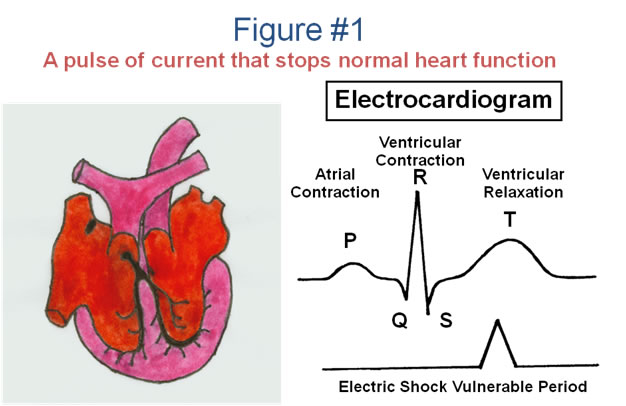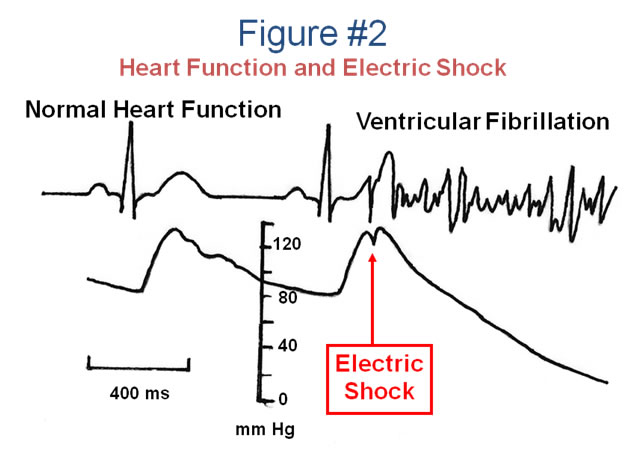Basic Electrical Safety
Risk of Electric Shock and Electrocution
Electric shock occurs when electrical current flows through a person’s body due to exposure to a voltage potential. Electric shock is distinct from electrocution. A fatal electric shock can be caused by a current of short duration that flows through the body and interrupts normal heart function. The heart is highly susceptible to this interruption during a particular period in the heart’s normal cycle. Figure #1 shows an Electrocardiogram of the normal heart cycle and the period of time that it is vulnerable to current pulse interfering with its function. When the body is subjected to a pulse of current through it at this specific time, Ventricular Fibrillation occurs - this is shown in Figure #2. As a result, the heart stops performing its function of pumping blood.


Risk of Electric Shock and Electrocution
When considering the fact that the heart is only highly susceptible to electric shock during a portion of its cycle, it becomes clear that there is an element of chance involved in surviving an electric shock. It is simply a matter of luck when one is subjected to the momentary pulse of current. If one person is subjected to a current pulse at the right time in the heart cycle he may just walk away, while another person subjected to the same current pulse may be hit with it at the wrong time in the heart’s cycle and he will experience a total stoppage of the normal heart function. This is the random nature of momentary electric shock.
There are a number of factors that will impact the amount of current the body will draw at any given voltage. In addition, the amount of current passing through the heart that could result in a lethal electric shock is even more difficult to determine. The ground path the current passing through the body takes is one major factor. Was the path that the current took to ground: hand to hand; hand to foot; foot to foot; or worse than any of these, hand to chest? The surface area of contact will significantly impact this issue – greater contact area means more current through the body. Equally significant is pressure of contact with the potentially fatal voltage source. Another major determining factor is the individual’s body mass.
A simple circuit model that is often used by safety professionals is a 1500 ohm resistor shunted by a .15uf capacitor. This model is necessarily overly simplified; however, its simplification makes it more useful for practical application. Figure #3 shows how this model is used. Voltage is measured across the resistor and the “leakage current” or current through the body is calculated by V/R = I.
